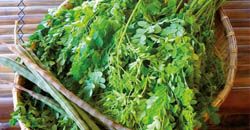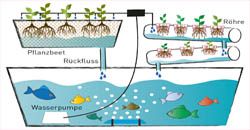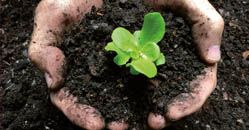Terra Preta
The biggest rain forest of the earth grows in grounds that belong to the poorest in nutrient of the world. However, over and over again colonists and natives in the width of the Amazon rain forest bump into small areas with Terra Preta – black earth – powerful soils rich in humus. South American Indians created them in these rain forests 2000 to 3000 years ago. The soil is fined crumbly and rich in nutrient – even today. In the meantime, archeologists discover more and more tracks of a big civilization that may have lived on the shores of the Amazon and was supplied with food by this black earth, deep into the inland.
Terra Preta – black earth – powerful soils rich in humus. South American Indians created them in these rain forests 2000 to 3000 years ago. The soil is fined crumbly and rich in nutrient – even today. In the meantime, archeologists discover more and more tracks of a big civilization that may have lived on the shores of the Amazon and was supplied with food by this black earth, deep into the inland.
However, the Terra Preta is far more than only a dumb witness from past times.
Fertile soil
The Terra Preta’s fertility is of sustainable and lasting effect – this completely without artificial and expensive fertilizers.
The secret of the Terra Preta
The Terra Preta is a mixture from charcoal and numerous organic materials, like culinary rubbish, bones and feces. Almost any organic material can be used for its production, just as a good gardener practices composting even in our day. Newer investigations of soil scientists show that the charcoal is probably the most vital factor for the fertility of the Terra Preta. The charcoal works like a granary and prevents important organic nutrients from being washed out of the ground by plentiful rains.
Charcoal – organic coal
The most remarkable of the Terra Preta soils is the “charcoal”. Because one can char practically any organic material and not only wood, one better says “organic coal” or “plant coal”. For example, organic coal can be also produced from straw, bark, brushwood, rice bran, coconut shells, etc.
During strong rain, Terra Preta can hold more water than normal soil so erosion is reduced. On the other hand, in the dry season it spends water far longer. At the same time, the nutrients are integrated into the charcoals so firmly that the water does not wash them out, while plant roots can penetrate the pores and use the nutrients. In the hollow cavities of the organic coal, complex cohabitations and symbioses of microorganisms and larger soil organisms can settle and even outlast unfavorable times like drought and nutrient deficiency.
Fermentation
The most fertile ground on our planet originates within short time from the fermentation of mixed organic rubbish and charcoal (see also www.ithaka-journal.net), and later, composting.
By this carefully controlled fermentation, rubbish is hygienized and the organic coal and the originating humus is enriched with good microorganisms and plentiful plant nutrients.
To stimulate fermentation, the rubbish is added e.g. anaerobic so-called Effective Microorganisms (EM). Thereby, putrefaction processes, disagreeable smells and the development of pathogenic germs are excluded. Insects and animals cannot disturb the anaerobic process of the fermentation.
For more information see www.das-gold-der-erde.de and www.ithaka-journal.





